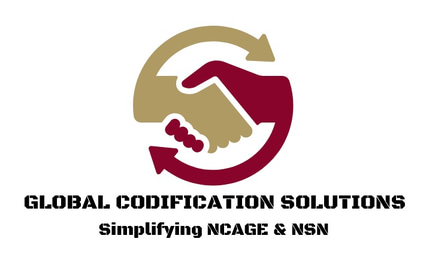The Birth of NCAGE
Understanding Its Global Significance
1/10/20252 min read
In an interconnected world where global supply chains are increasingly complex, the NATO Commercial and Government Entity (NCAGE) code stands out as a vital tool for ensuring efficiency, transparency, and standardization. This blog will explore the origins of the NCAGE system, its evolution, and why it remains a cornerstone of global trade and defense logistics.
The Origins of NCAGE
The NCAGE code was developed by NATO to facilitate standardized identification of entities involved in the supply chain—both commercial and governmental. The initiative aimed to streamline processes for procurement, inventory management, and logistics among NATO member states and their global partners.
The system’s roots trace back to the Cold War era when efficient and secure supply chain mechanisms were paramount for military operations. As global commerce expanded, the utility of NCAGE codes grew beyond military applications, becoming a universal standard for businesses engaging with governments worldwide.
What is an NCAGE Code?
An NCAGE code is a unique identifier assigned to organizations worldwide. This alphanumeric code typically consists of five characters and is used to identify suppliers, manufacturers, and other entities involved in the production and distribution of goods and services.
Key characteristics of NCAGE codes include:
Global Recognition: NCAGE codes are recognized and utilized by NATO countries and beyond.
Unique Identification: Each NCAGE code is unique, ensuring no ambiguity in identifying entities.
Integration with Other Systems: NCAGE codes seamlessly integrate with other global systems like the NATO Stock Number (NSN) and the U.S. System for Award Management (SAM).
The Role of NCAGE in Today’s World
NCAGE codes have transcended their initial purpose to become essential tools for various industries:
Global Defense Collaboration: NCAGE codes ensure seamless communication and interoperability among NATO member states and partners. They standardize the identification of suppliers, enhancing the efficiency of defense logistics.
Trade and Commerce: For businesses seeking international opportunities, an NCAGE code is often a prerequisite for engaging in government contracts. This opens doors to lucrative markets and establishes credibility.
Supply Chain Optimization: NCAGE codes provide visibility across supply chains, ensuring accurate tracking and accountability of goods.
How to Obtain an NCAGE Code
Getting an NCAGE code is a straightforward process but requires attention to detail. Here are the basic steps:
Determine Eligibility: Ensure your organization qualifies for an NCAGE code, typically for entities involved in manufacturing, distribution, or government services.
Submit a Request: Submit a formal application through the NATO Codification System or the appropriate authority/agency in your country.
Verification: Provide documentation to verify your organization’s legitimacy and operational details.
Assignment: Once approved, you will receive your NCAGE code, enabling you to start using it for contracts and logistics purposes.
The Future of NCAGE
As global commerce continues to evolve, the relevance of NCAGE codes remains steadfast. Emerging technologies like blockchain and AI-driven logistics may further integrate NCAGE codes into next-generation supply chain solutions, enhancing their utility and efficiency.
By understanding the history and importance of NCAGE codes, businesses can better appreciate their value and leverage them to unlock international opportunities. Whether you're a small manufacturer or a large multinational corporation, securing an NCAGE code is a strategic step toward global engagement.
Global Codification Solutions
Expert support for NCAGE Registration and NSN Generation.
© 2024. All rights reserved.
